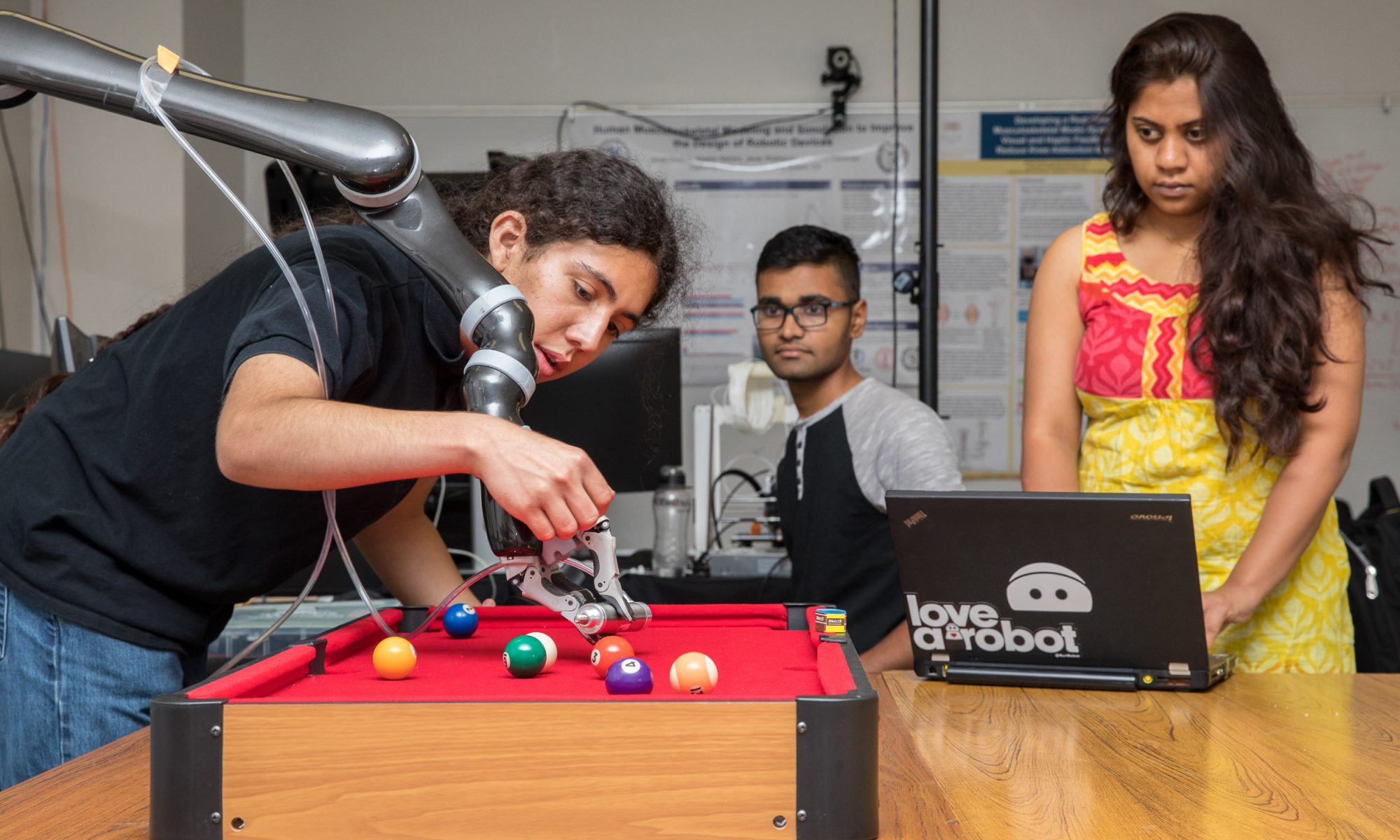 The idea to create an underwater robot came out of a conversation Stanford University computer science professor Oussama Khatib had with an underwater archeologist at a conference. Three years later, the university celebrated Ocean One’s first mission—diving 300 feet below the surface to recover items from a ship that sank off the coast of France in 1664.
The idea to create an underwater robot came out of a conversation Stanford University computer science professor Oussama Khatib had with an underwater archeologist at a conference. Three years later, the university celebrated Ocean One’s first mission—diving 300 feet below the surface to recover items from a ship that sank off the coast of France in 1664.
Khatib, an expert in human-robot interaction, was at CSULB Friday to deliver a technical seminar on the New Robotics Age.
In the classroom, he said, students have taught robots to play ping pong, barbecue food, and fight. In the medical field, robot-aided surgery and robotic catheterization are being developed. And in the area of human augmentation, a number of different exoskeletons have been designed.
“Robotics is really undergoing a great revolution. There’s a lot of excitement,” said Khatib, who was doctoral adviser to CSULB mechanical engineering Assistant Professor Emel Demircan.
Khatib sees much potential is developing robots to penetrate hostile environments such as mines, the ocean, and areas inaccessible to humans. The key to their development is haptics to allow humans and robots to interact. “We want robots to be as autonomous as possible, but we still need to be able to interact with the robot,” he said.
At Stanford, researchers have been working on human-guided motion, where two robots named Romeo and Juliet comply with light touches from humans to accomplish tasks, such as carrying a container or dancing with a human. Stanford Robotics’ SupraPed robot was able to rock climb and navigate uneven terrain aided by walking poles.
Honda’s development of the ASIMO took 14 years, and was accompanied by advances in math, physics, and human anatomy. The humanoid robot can run, climb stairs, reach and grasp for objects, and comprehend and follow basic commands.

But such accomplishments don’t come easy. Khatib said ASIMO’s motions had to be programmed joint by joint. “There is much programming going on,” he said.
For Ocean One, it was a milestone when the robot was first submerged in the Stanford pool and its “electronics didn’t fry.” As time went on, the humanoid could be seen propelling itself underwater.
“People in the pool would ask, ‘What is that thing?’ And when we said it was a robot, they would go back to swimming,” Khatib recalled.
Ocean One’s descent to the sunken ship marked the culmination of many years of work. There were some tense moments when the robot’s arm got stuck under one of the ship’s cannons, but the team on the surface was able to set it free. Ocean One successfully completed its task: plucking a piece of treasure from the wreckage, placing it in a container, and closing the container’s lid. Khatib said he was the first to lay hands on the treasure—a vase that “hadn’t been touched in 400 years.”

